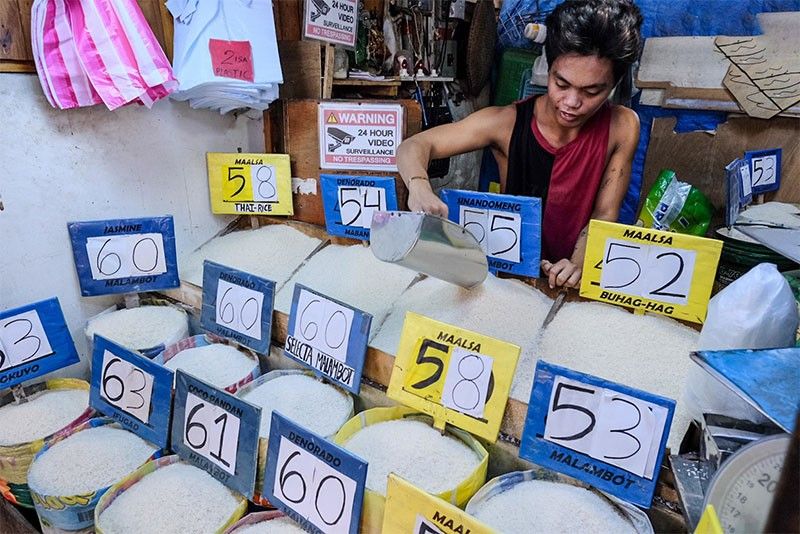Tags
NEDA sees rice prices going down in September

A vendor arranges rice for sale at a market in Paco, Manila on March 13, 2024.
MANILA, Philippines — Domestic rice prices are likely to decline in September to reflect the downtrend in prices of the staple in the world market, according to the National Economic and Development Authority (NEDA).
With the global rice prices forecasted to go down by September, NEDA Secretary Arsenio Balisacan told reporters on the sidelines of the Philippine Economic Briefing yesterday, such is expected to also be seen in the local market.
“It’s already past El Niño and the election in India is over, so all those restrictions and exports of major exporting countries are expected to loosen. And then the production is expected to increase and the global supply. So that’s the forecast,” he said.
He said the domestic prices simply reflect the trends in global prices, particularly for rice.
“So, as global prices come down, and provided our exchange rate will not sharply depreciate, which I don’t expect, then we should see domestic prices coming down,” he said.
Despite easing in April, rice inflation remained elevated at 23.9 percent from 24.4 percent in March.
National Statistician Dennis Mapa earlier said two of the three varieties of rice in the country being tracked by the Philippine Statistics Authority declined slightly.
In particular, the average price of well-milled rice decreased to P56.42 per kilo in April from the previous month’s P56.44 per kilo, while the average price of special rice was down to P64.68 from P64.75.
On the other hand, the average price of regular milled rice rose to P51.25 per kilo from P51.11 per kilo.
In terms of the outlook on inflation for this month, Balisacan said the expectation is it would remain within the government’s two to four percent target.
“So far, there have been no surprises,” he said.
Headline inflation or the rate of increase in the average prices of consumer goods and services typically purchased by Filipinos quickened for the third straight month to 3.8 percent in April from 3.7 percent in March, driven by faster food and transport cost increases.
Average inflation from January to April was at 3.4 percent, within the government’s target of two to four percent.
As for how possible rate cuts by the Bangko Sentral ng Pilipinas could affect the economic growth outlook, he said such could have near and longer-term effects.
In particular, he said it could have immediate effects for those who are planning to purchase durable consumer goods.
But for investments, he said the effects might take longer.
The economy posted a 5.7 percent growth in the first quarter, slower than the 6.4 percent expansion posted in the same period last year, but faster than the 5.5 percent growth in the fourth quarter of 2023.
For this year, the government is aiming for a six to seven percent growth.
https://www.philstar.com/business/2024/05/28/2358370/neda-sees-rice-prices-going-down-septemberPublished Date: May 27, 2024






